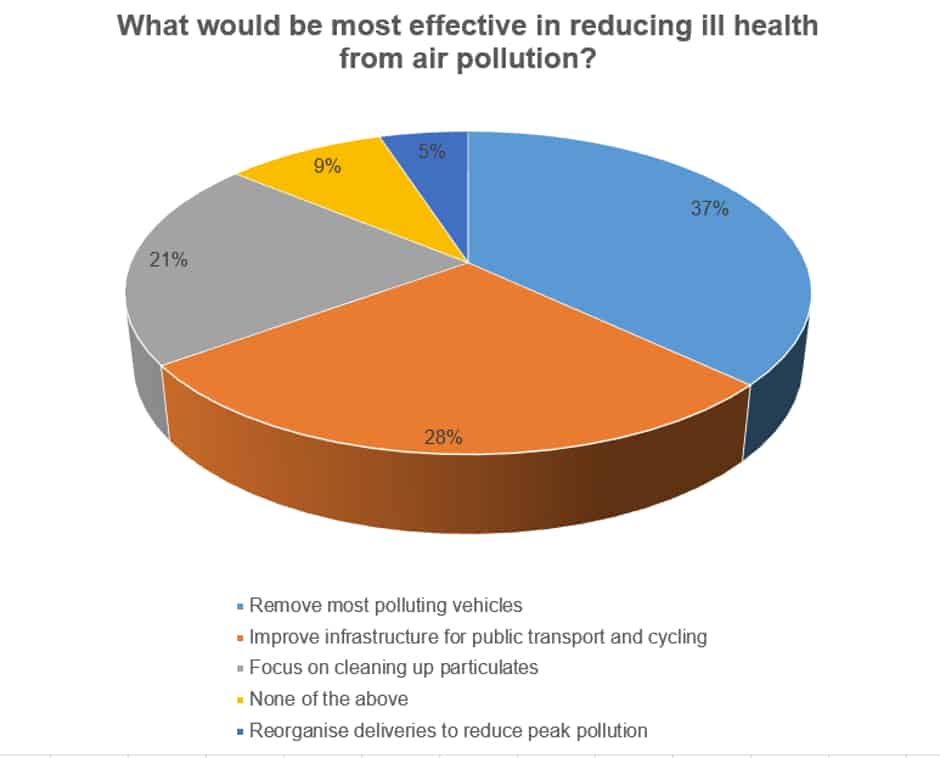Last week's poll: reducing ill-health from air pollution
Engineer readers show a diversity of opinion over how to reduce the health impact of air pollution


There was no consensus among the 351 readers who responded to last week’s poll. The largest single group of respondents, 37 per cent, opted for removing the most polluting vehicles from the roads, although as one reader pointed out, there was an ambiguity in the phrasing of the option meaning it wasn’t clear whether we were referring to removing the vehicles with the worst emission performance, or removing the majority of polluting vehicles (the intention was to refer to the former).
The next largest group, 28 per cent, thought that improving infrastructure for cycling and public transport would have the biggest effect, while 21 per cent opted for a focus on cleaning up particulates. The smallest group, five per cent, thought that reorganising freight delivery times would have the biggest effect, while nine per cent declined to pick an option.
The feedback section was lively, with 29 comments. Among these were the usual smattering of denialists insisting that claims of health effects on poor air quality were overblown.
Register now to continue reading
Thanks for visiting The Engineer. You’ve now reached your monthly limit of news stories. Register for free to unlock unlimited access to all of our news coverage, as well as premium content including opinion, in-depth features and special reports.
Benefits of registering
-
In-depth insights and coverage of key emerging trends
-
Unrestricted access to special reports throughout the year
-
Daily technology news delivered straight to your inbox










Water Sector Talent Exodus Could Cripple The Sector
Well let´s do a little experiment. My last (10.4.25) half-yearly water/waste water bill from Severn Trent was £98.29. How much does not-for-profit Dŵr...